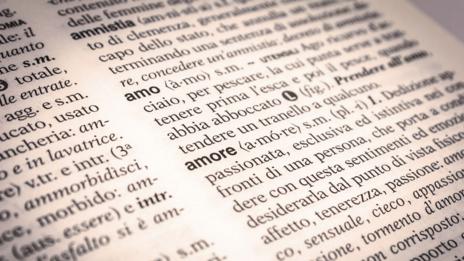Health

Sleep learning used to be a pipe dream. Now neuroscientists say they have found ways to enhance your memory with your eyes closed, says David Robson.
Just before you climb under your duvet, you carefully prepare your room. You sprinkle a few drops of incense on your pillow, put on some headphones, and place a strange-looking band over your scalp. Then you go to sleep. The ritual takes just a few minutes, but you hope this could accelerate your learning of a diverse range of skills: whether you are trying to master the piano, tennis or fluent French. You won’t recall a single aspect of the night’s “training” – but that doesn’t matter: your performance the next morning should be better, all the same.
The idea of learning as you sleep was once thought very unlikely, but there are several ways – both low- and hi-tech – to try to help you acquire new skills as you doze. While there is no method that will allow you to acquire a skill completely from scratch while you are unconscious, that doesn’t mean that you still can’t use sleep to boost your memory. During the night, our brain busily processes and consolidates our recollections from the day before, and there could be ways to enhance that process.
Given that we spend a third of our lives in the land of nod, it is little wonder that sleep learning has long captured the imagination of artists and writers. In most incarnations, it involved the unconscious mind absorbing new information from a recording playing in the background. In Aldous Huxley’s Brave New World, for instance, a Polish boy learns English after having slept through a radio lecture by George Bernard Shaw; the authoritarian government soon uses the same technique to brainwash its subjects. More recently, in The Simpsons, Homer buys a tape to subliminally reduce his appetite as he sleeps, only to find that it is instead changing his vocabulary. When his wife, Marge, asks if his diet is working, the normally inarticulate Homer replies: “Lamentably, no. My gastronomic rapacity knows no satiety”.
Bad science
In reality, this particular kind of sleep learning is almost certainly impossible. Although some early studies suggested that subjects could pick up some facts as they slept, the researchers couldn’t be sure that they hadn’t just awoken to listen to the recording. To test those suspicions, Charles Simon and William Emmons attached electrodes on the scalps of their subjects, allowing them to be sure that they only played the tapes once the subjects were dozing. As they had suspected, the subjects learnt nothing once they had dropped off. The results were published in the 1950s, but entrepreneurs over the years have still tried to cash-in on the attraction of effortless learning with various products – even though their methods had no scientific basis.

Monitoring brain activity of sleeping people suggests they can't learn new skills while unconscious (SPL)
Despite being blind and deaf to new information, however, the sleeping brain is far from idle: it mulls over the day’s experiences, sending memories from the hippocampus – where memories are first thought to form – to regions across the cortex, where they are held in long-term storage. “It helps stabilise the memories and integrate them into a network of long-term memory,” says Susanne Diekelmann at the University of Tubingen in Germany. Sleep also helps us to generalise what we’ve learnt, giving us the flexibility to apply the skills to new situations. So although you can’t soak up new material, you might instead be able to cement the facts or skills learned throughout the day.
Smell enhancer
So far, at least four methods have shown promise. The simplest strategy harks back to the research of a 19th Century French nobleman named the Marquis d’Hervey de Saint-Denys. As he explored ways to direct his dreams, the Marquis found that he could bring back certain memories with the relevant smells, tastes or sounds. In one experiment, he painted a scantily clad woman while chewing an orris root; when his servant then placed the root in his mouth as he slept, the tart flavour brought back visions of the same beautiful lady in the foyer of a theatre. She was wearing “a costume that would have hardly been acceptable to the theatre committee”, he wrote with delight in his book, Dreams and How to Guide Them. Another time, he asked the conductor of an orchestra to play certain waltzes whenever he danced with two particularly attractive women. He then rigged up a clock to a music box, so that it played the same tunes during the night, which apparently brought their handsome figures to his sleeping mind.
The Marquis simply wanted to seed his slumbers with pleasant (and sometimes lustful) experiences, but it now looks like the same approach can also trigger the sleeping brain to replay the learning of skills or facts, reinforcing the memory in the process.

(Thinkstock)
Diekelmann, for instance, asked her volunteers to play a variation of the game Concentration, in which they had to learn a specific pattern of objects in a grid before going to sleep in her lab. Some of the subjects were exposed to a subtle, artificial, odour as they played, and Diekelmann then wafted the same scent into their noses as they slept. Brain scans showed that these subjects had greater communication between the hippocampus and several cortical areas, compared to those without the cue – just the kind of activity that should lead to enhanced memory consolidation. Sure enough, those subjects remembered about 84% of the object locations when they awoke, while a control group remembered just 61%.
It’s not just sweet smells that could boost learning; as the Marquis found with his night-time waltzes, sounds might also be able to trigger recall, provided they do not wake you up in the process. In one study,volunteers found it easier to master a musical game (a little like Guitar Hero) if they heard soft strains of the melody as they slept. Bjorn Rasch at the University of Zurich, Switzerland, meanwhile, found that the same setup helped Swiss German speakers learning Dutch vocabulary, allowing them to remember about 10% more.
Tech upgrade
In the near future, technology may offer further ways of upgrading the brain’s sleep cycles. Memory consolidation is thought to occur during specific, slow, oscillations of electrical activity, so the idea here is to subtly encourage those brain waves without waking the subject. Jan Born, at the University of Tubingen, has been at the forefront of these experiments. In 2004, he found that he could help amplify those signals using transcranial direct current stimulation (tDCS), which passes a small electric current across the skull, successfully improving his subjects’ performance on a verbal memory test.
More recently, he has turned to an even less-invasive form of stimulation, which uses a skullcap of electrodes to measure neural activity, while headphones deliver sounds that are in sync with the brain waves. Born compares the auditory stimulation to the tiny push that you might give a child on a swing, so that it gently enhances neural activity that is already present in the brain. “You deepen the slow wave sleep and make it more intense,” says Born. “It’s a more natural way of getting the system into a rhythm,” he says.

(Thinkstock)
If the idea of going to sleep with a cumbersome headset doesn’t appeal, Miriam Reiner at the Technion Institute of Technology in Haifa, Israel may have a more attractive solution. She hopes to use a form of neurofeedback, which allows subjects to control their neural activity while awake. In her setup, an electrode attached to the subject’s head feeds into a simple computer game, in which the subject is advised to drive a car with the power of their thoughts.
When the electrode records the right frequency of brainwaves, normally associated with memory consolidation during sleep, they accelerate; when they don’t, it slows down. It typically takes just a few minutes for the subjects to start revving up the right brainwaves – and the change in mind set is palpable, says Reiner. “I feel kind of relaxed – like when you’re in a garden or walking along beach. It’s just like being in a serene beautiful place.” The idea is to kick-start memory consolidation straight after learning, which then gives the sleeping brain a head-start as it sets about reorganising the day’s events. “You create a seed that then grows during the night,” says Reiner.
Play a tune
To test the impact on learning, her subjects first learned a complex sequence of finger movements – a little like learning to play a tune on the piano – before taking 30 minutes of neurofeedback. The benefits were immediate – straight after the training they were about 10% better than the controls, suggesting the computer game really had begun to stabilise their memories as if they were actually asleep. Importantly, the improvements continued to grow as they were tested throughout the following week, supporting her theory that neurofeedback could help memories to blossom as you sleep.
Needless to say, we will need to see bigger trials with many more subjects before these techniques should be recommended for everyday use. Since the experiments have so far used somewhat artificial tests of learning and memory, it would also be useful to see how they fare on more useful tasks; Reiner is beginning to take a few steps in this direction by testing whether her neurofeedback can help students learn the guitar. Diekelmann also thinks that we need to confirm that these memory hacks don’t have unexpected consequences. “If you enhance one set of memories, maybe you’d impair another set,” she says.

Sounds and melodies can consolidate memory (Thinkstock)
And we shouldn’t shy away from the problems highlighted by fiction like Brave New World and The Simpsons, she says. Although she doesn’t think that these methods could be used for brainwashing people against their will, she thinks we still need to question whether it would be right to start manipulating their children’s memories, for instance, in these ways. “Sleep is a vulnerable state.” But she’s keen to stress that these potential issues shouldn’t deter interest in sleep learning. “It’s very worthwhile. We just need to use it as responsibly as possible.”
Easy tricks
Once those questions have been addressed, there shouldn’t be too many practical hurdles for people who wish to use the techniques for themselves, says Diekelmann. Many of her students and colleagues have already found that sensory cues during sleep can help them swat-up for exams. “It’s very easy to apply,” she says. And you can now buy EEG kits that work with your smartphone, potentially opening the door for games that help you boost memory consolidation. Even the hardware for certain forms of tDCS became commercially available last year, which could lead to kits designed to improve sleep learning.
Further evidence will be needed to show that the commercial kits can provide the benefits seen in the laboratory experiments, but Born is optimistic. “I think it’s just a matter of time before it is used as a cognitive enhancer,” he says.
At the very least, the research could change the way we view this often under-appreciated part of our lives. Sleep tends to be considered an unnecessary down-time that we try to conquer with coffee or Red Bull; we are all driven by the need to squeeze the day for every last drop of productivity. But we may take more time to catch 40 winks if we know that the most profitable part of the day really could involve doing nothing at all.

For most of his 20s, Ed Cooke had been hovering around the top 10 of the World Memory Championships. His achievements includedmemorising 2,265 binary digits in 30 minutes and the order of 16 packs of playing cards in just an hour. But at the age of 26, he was getting restless, and wanted to help others to learn like him. "The memory techniques take a certain discipline," he says. "I wanted a tool that would just allow you to relax into learning."
The resulting brainchild was Memrise. Launched in 2010, the website and app is now helping more than 1.4 million users to learn foreign languages, history and science with the ease of Cooke's memory powers. It has been followed by similar apps that also take the pain out of learning – both for individuals, and in schools, with some teachers finding benefits that even Cooke couldn't have predicted.
“It's very powerful – it does all the spade work of learning,” says Dominic Traynor, who teaches Spanish at the St Cuthbert with St Matthias Primary School in London, UK. “I would say we've covered a year's worth of work in the first six months.”
As Cooke first set out developing his idea, he turned to his former classmate at Oxford University, Princeton neuroscientist Greg Detre, to help update his tried-and-tested techniques with the latest understanding of memory. Together, they came up with some basic principles that would guide Memrise’s progress over the following years. The first is the idea of “elaborative” learning – in which you try to give extra meaning to a fact to try to get it to stick in the mind. These “mems”, as the team call them, are particularly effective if they tickle the funny bone as well as the synapses – and so for each fact that you want to learn, you are encouraged to find an amusing image or phrase that helps plant the memory in your mind. For example, in one German language course, the word “abend” for evening, is illustrated with a picture of Abraham Lincoln listening to a ghetto blaster, with the caption “Abe ends work in the evening”. It’s silly, but that’s the point – an absurd image is memorable.
To cultivate those memories, the app then sets you a series of carefully timed tests over the days, weeks and months that follow. Numerous experiments over the past few years have shown that the best way to build new neural pathways is to try and recall it afresh, helping subjects remember more than twice as much, over the long term, than just passively reading the material; self-testing also turns out to be more effective than creative techniques like drawing diagrams and mind maps.
Although you can find other apps designed for rote learning and drilling in this way, Memrise makes use of another trick. Detre had found that the most effective time to reactivate a memory is when you feel that it is half-remembered, half-forgotten – when you feel it’s on the “tip of your tongue” but you can't quite reach it. So the Memrise team have designed an algorithm that predicts the arrival of that agonising state, and then springs a test on you. Since the app constantly tracks your progress, over time it becomes more accurate at predicting your learning curve, helping you surf the waves of your memory to more efficient learning.
Fun learning
All of which may help take the pain out of learning; however, the big challenge was to make it fun too. “We're always having to compete for your attention when you look at the screen of your phone,” says Ben Whately, Memrise's chief operating officer. “The experience has to have as much light-hearted interest as something like Pinterest.” But the team have also tried hard to create a community of learners that encourages friendly competition – so users can upload their courses to share with other people looking to learn the same subject, and they can compare their rank on a leader board. “We needed people to be comfortable to share stuff on sites like Facebook in order for it to get up and running on such a big scale,” says Whately.
Unsurprisingly, it was the friendly competition element that captured the attention of Traynor's primary school pupils learning Spanish. “As soon as they come into the classroom, they want to see where they are on the leader board,” he says. And there are other advantages. Each lesson, Traynor tends to split the class into two – while half are doing the “spade work” on vocabulary learning on the school's iPads, he can teach the others – before the two halves switch over. By working with these smaller groups, he can then give more individual attention to each child's understanding of the grammar.
Even more powerfully, Traynor recently began encouraging his class to record and upload their pronunciation of the words onto the app – which they can then share with their classmates using the course. The sound of their classmates seems to have spurred on their enthusiasm, says Traynor. “They're constantly trying to work out whose voice they're hearing,” he says. “So they're giving more attention to the different sounds. I think it's improved their speaking and listening dramatically.”
Although most courses on Memrise deal with foreign languages, teachers in other subjects are also starting to bring the technology to their classroom. Simon Birch from The Broxbourne School in Hertfordshire, for instance, uses it to teach the advanced terminology needed for food technology exams, while his school’s English department are using it to drill spelling. "The benefits for literacy can't be overstated," Birch says.
The Memrise team are now hoping to develop further features that might help teachers like Birch and Traynor – by providing them with data on students’ progress, so they can see which bits of the course are failing to stick. And following Memrise’s success, other companies seem to be seeing the potential of applying the art and science of memory to learning apps. For instance, the Cerego app, which launched in September 2013, also times your learning and testing to boost recall, and its team have so far launched courses on brain anatomy, music theory and art history. The team’s preliminary tests on school students suggests that classes perform between 20-50% better using the app, and they are actively working with teachers and educational institutions to develop courses together.
So are we coming close to the relaxed, effortless learning that Cooke first envisaged? Traynor thinks so; many of his class are so hooked that they readily practice Spanish on their iPads at home, to the point that he now has to plan four or five lessons in advance. “That's the strength of it,” he says. “The learning just doesn't stop.”

Indigestion, irritable bowel syndrome, inflammatory bowel diseases...if your belly always seems to be in an uproar, try munching 18 ounces of fish weekly to ease your misery. Repeated studies show that the fatty acids in fish, called EPA and DHA, can significantly reduce intestinal inflammation, cramping and belly pain and, in some cases, provide as much relief as corticosteroids and other prescription meds. "EPA and DHA are powerful, natural, side effect-free anti-inflammatories, that can dramatically improve the function of the entire gastrointestinal tract," explains biological chemist Barry Sears, Ph.D., president of the Inflammation Research Foundation in Marblehead, MA. For best results, look for oily fish like salmon, sardines, tuna, mackerel, trout and herring.

Latest studies show that at least one in four women is struggling with arthritis, gout or chronic headaches. If you're one of them, a daily bowl of cherries could ease your ache, without the stomach upset so often triggered by today's painkillers, say researchers at East Lansing's Michigan State University. Their research reveals that anthocyanins, the compounds that give cherries their brilliant red color, are anti-inflammatories 10 times stronger than ibuprofen and aspirin. "Anthocyanins help shut down the powerful enzymes that kick-start tissue inflammation, so they can prevent, as well as treat, many different kinds of pain," explains Muraleedharan Nair, Ph.D., professor of food science at Michigan State University. His advice: Enjoy 20 cherries (fresh, frozen or dried) daily, then continue until your pain disappears.

Painful ear infections drive millions of Americans to doctors' offices every year. To cure one fast, just place two drops of warm garlic oil into your aching ear twice daily for five days. This simple treatment can clear up ear infections faster than prescription meds, say experts at the University of New Mexico School of Medicine. Scientists say garlic's active ingredients (germanium, selenium, and sulfur compounds) are naturally toxic to dozens of different pain-causing bacteria. To whip up your own garlic oil gently simmer three cloves of crushed garlic in a half a cup of extra virgin olive oil for two minutes, strain, then refrigerate for up to two weeks, suggests Teresa Graedon, Ph.D., co-author of the book,
Best Choices From The People's Pharmacy. For an optimal experience, warm this mix slightly before using so the liquid will feel soothing in your ear canal.

Sip 1 tablespoon of apple cider vinegar mixed with 8 ounces of water before every meal, and experts say you could shut down painful bouts of heartburn in as little as 24 hours. "Cider vinegar is rich in malic and tartaric acids, powerful digestive aids that speed the breakdown of fats and proteins so your stomach can empty quickly, before food washes up into the esophagus, triggering heartburn pain," explains Joseph Brasco, M.D., a gastroenterologist at the Center for Colon and Digestive Diseases in Huntsville, AL.

Got a toothache and can't get to the dentist? Gently chewing on a clove can ease tooth pain and gum inflammation for two hours straight, say UCLA researchers. Experts point to a natural compound in cloves called eugenol, a powerful, natural anesthetic. Bonus: Sprinkling a ¼ teaspoon of ground cloves on meals daily may also protect your ticker. Scientists say this simple action helps stabilize blood sugar, plus dampen production of artery-clogging cholesterol in as little as three weeks.


